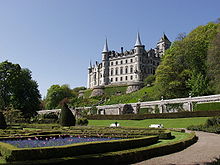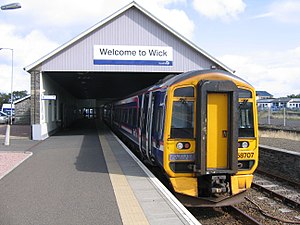Far North Line
| Inverness – Wick / Thurso | |||||||||||||||||||||||||||||||||||||||||||||||||||||||||||||||||||||||||||||||||||||||||||||||||||||||||||||||||||||||||||||||||||||||||||||||||||||||||||||||||||||||||||||||||||||||||||||||||||||
|---|---|---|---|---|---|---|---|---|---|---|---|---|---|---|---|---|---|---|---|---|---|---|---|---|---|---|---|---|---|---|---|---|---|---|---|---|---|---|---|---|---|---|---|---|---|---|---|---|---|---|---|---|---|---|---|---|---|---|---|---|---|---|---|---|---|---|---|---|---|---|---|---|---|---|---|---|---|---|---|---|---|---|---|---|---|---|---|---|---|---|---|---|---|---|---|---|---|---|---|---|---|---|---|---|---|---|---|---|---|---|---|---|---|---|---|---|---|---|---|---|---|---|---|---|---|---|---|---|---|---|---|---|---|---|---|---|---|---|---|---|---|---|---|---|---|---|---|---|---|---|---|---|---|---|---|---|---|---|---|---|---|---|---|---|---|---|---|---|---|---|---|---|---|---|---|---|---|---|---|---|---|---|---|---|---|---|---|---|---|---|---|---|---|---|---|---|---|
|
Wick train station
| |||||||||||||||||||||||||||||||||||||||||||||||||||||||||||||||||||||||||||||||||||||||||||||||||||||||||||||||||||||||||||||||||||||||||||||||||||||||||||||||||||||||||||||||||||||||||||||||||||||
| Route length: | 270 km | ||||||||||||||||||||||||||||||||||||||||||||||||||||||||||||||||||||||||||||||||||||||||||||||||||||||||||||||||||||||||||||||||||||||||||||||||||||||||||||||||||||||||||||||||||||||||||||||||||||
| Gauge : | 1435 mm ( standard gauge ) | ||||||||||||||||||||||||||||||||||||||||||||||||||||||||||||||||||||||||||||||||||||||||||||||||||||||||||||||||||||||||||||||||||||||||||||||||||||||||||||||||||||||||||||||||||||||||||||||||||||
|
|||||||||||||||||||||||||||||||||||||||||||||||||||||||||||||||||||||||||||||||||||||||||||||||||||||||||||||||||||||||||||||||||||||||||||||||||||||||||||||||||||||||||||||||||||||||||||||||||||||
The Far North Line is Great Britain's northernmost railway line . It connects Inverness with Wick and Thurso .
history
The Far North Line was built in several stages by four different companies:
| section |
Opened |
society |
|---|---|---|
| Inverness - Dingwall | 1862 | Inverness and Ross-shire Railway |
| Dingwall - Invergordon | 1863 | Inverness and Ross-shire Railway |
| Invergordon – Bonar Bridge (since 1977: Ardgay ) | 1864 | Inverness and Ross-shire Railway |
| Bonar Bridge - Golspie | 1868 | Sutherland Railway |
| Dunrobin - West Helmsdale | 1870 | Duke of Sutherland's Railway |
| Golspie – Dunrobin | 1871 | Duke of Sutherland's Railway |
| Helmsdale - Wick and Thurso | 1874 | Sutherland and Caithness Railway |
George Sutherland-Leveson-Gower, 3rd Duke of Sutherland (1828-1892), was an avid amateur railroader who - he was one of the richest men in Great Britain of his time - not only financed the Duke of Sutherland's Railway , but also privately a locomotive, Dunrobin , added and drove it himself, as well as a saloon car to take his guests for walks. This also included Queen Victoria . Originally he had even planned to relocate the route with a tunnel under his castle, but this was not done because it would have impaired the park too much. The then Prince of Wales and his wife, Prince Edward and Alexandra , had been invited to the opening of his railway .
By 1884, the Highland Railway absorbed the four companies. In 1923 the Highland Railway was taken over by the London, Midland and Scottish Railway as part of the British government's policy of consolidation for the railways of the United Kingdom as a result of the First World War . From 1948 to 1997 the British Railways operated the Far North Line, and Scotrail took over operations as part of privatization . From 2005 to March 2015, the concession was owned by First ScotRail , on April 1, 2015 Abellio ScotRail took over operations.
During the First and Second World War, the Far North Line had strategic importance as the only land-based supply line to the Scapa Flow naval base in the Orkney Islands . Due to its alignment between Golspie and Helmsdale , directly on the coastline, it was in a very exposed position for attacks from the seaside.
The Jellicoe Express connected Thurso directly to London Euston and Portsmouth . From 1903 to 1944 there was a connection line from Wick to Lybster , the Wick and Lybster Railway .

When the Dunrobin stop was abandoned in 1965 (reopened 1985 as Dunrobin Castle ), the Duke of Sutherland theoretically had the right to stop any scheduled train if he wanted to use it, a right that was derived from the time when his ancestors owned this section of the route. It is not known whether this was used. The reception building still belongs to him today.
business
The route is part of the ScotRail network , which has been operated by Abellio since April 2015 . Four trains run daily along its entire length (as of October 2019) from Monday to Saturday, one on Sundays. You are about 4½ hours on the way. There are additional trains in the southern section, between Inverness and Ardgay . Between Inverness and Dingwall , the route is part of a regional transport association called Invernet .

The route is traveled without shape or light signals . Instead, the Radio Electronic Token Block has been in use since 1985 : the driver requests a license to drive to the next train station by radio. The central management controlling the system is located in Dingwall. The switches are set by the driver. The route can thus be operated without a local dispatcher .
Trains from Inverness go to Georgemas Junction, change direction there and initially serve the branch line to Thurso. From there the train returns to Georgemas Junction and then continues to Wick. In the opposite direction, the procedure is exactly the opposite.
route
The route runs between Inverness and Tain along the coast of the Moray Firth . Between Tain and Golspie , the line made a long detour inland along the Dornoch Firth and via Lairg . This route was chosen to better develop the central part of Sutherland . In the past there were repeated plans to shorten the route via Dornoch , but this was never implemented. From Golspie the route runs along the North Sea coast again , from Helmsdale again through the sparsely populated interior. This was caused by the topography of the cliff, which made it impossible to connect the places on the coast from the south. At Georgemas the route branches out; the northern branch leads to Thurso , the northernmost railway station in Scotland, the other further east to Wick .
Worth knowing
- There is an association that campaigns for the route, the travelers and users on it: Friends of the Far North Line . He regularly publishes a small magazine, Newsletter of the Friends of the Far North Line .
- A commemorative plaque has been placed in the Dingwall train station, indicating that 134,864 sailors and soldiers were given tea here during the First World War .
- Next to the Rogart train station, a hostel offers overnight stays in former sleeping cars.
More pictures
See also
literature
- Michael G. Ball: European Railway Atlas - British Isles . 2nd Edition. Allan Books, Shepperton 1996, ISBN 0-7110-2407-3 .
- David McConell: Rails to Wick & Thurso . Dornoch Press, Dornoch 1988, ISBN 0-9513358-7-1 .
Web links
References and comments
- ↑ Information in km from Mike Bridge (ed.): Track Atlas of Mainland Britain . Bradford on Avon 2009.
- ↑ The successor to this Edwardian saloon car is now in the collection of the National Railway Museum in York .
- ↑ Global rail news: Abellio ScotRail franchise launched, April 1, 2015 , accessed on April 23, 2015
- ↑ McConell, p. 84: At the time of the opening of the continuous rail service between Wick / Thurso and Inverness in 1874 the travel time was about seven hours.
- ^ Richard Deiss: Vane Cathedral and Sugar Beet Station. A short story about 200 European train stations . Bonn 2010, p. 73.









